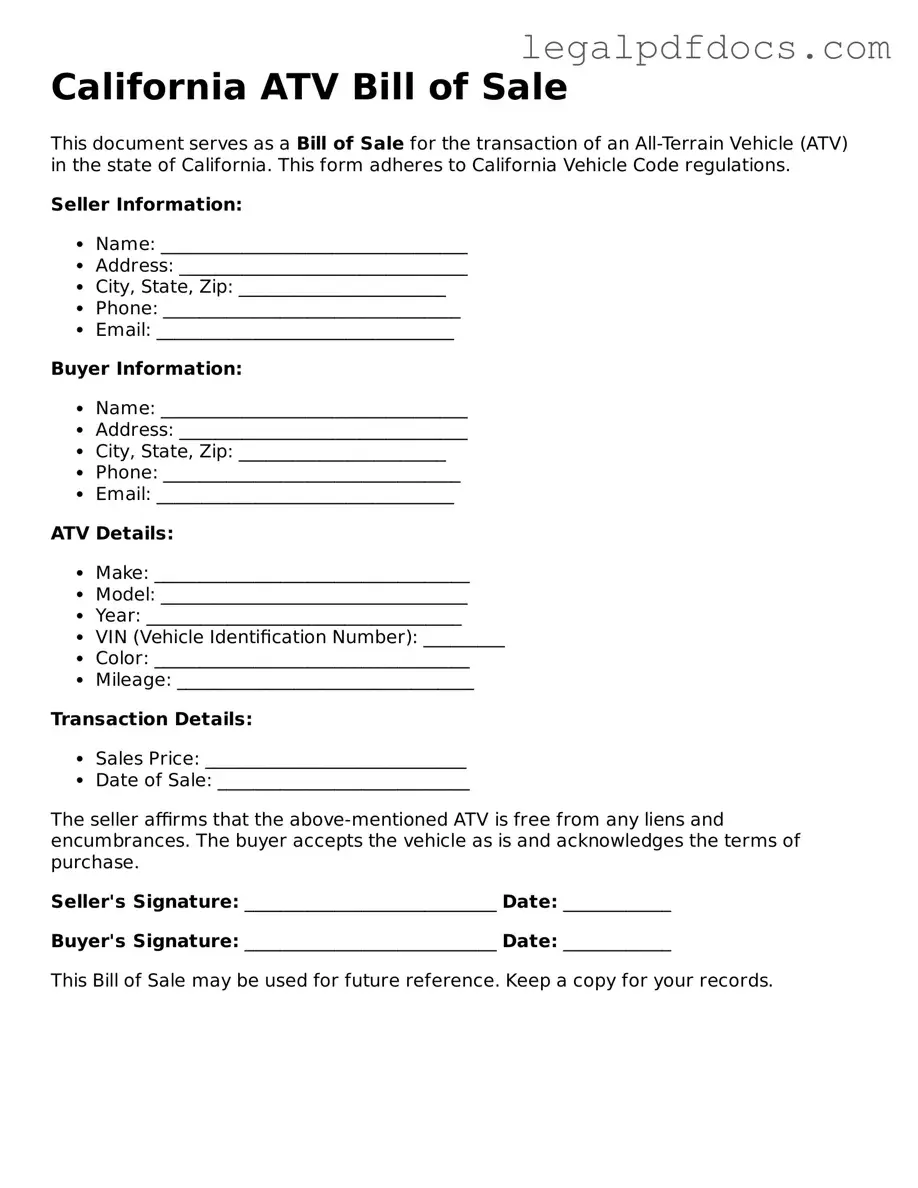When buying or selling an all-terrain vehicle (ATV) in California, a Bill of Sale form serves as a vital document to finalize the transaction. This form not only provides a record of the sale but also protects both the buyer and the seller by detailing essential information about the vehicle and the parties involved. Key aspects of the form include the names and addresses of both the seller and buyer, a description of the ATV—including its make, model, year, and Vehicle Identification Number (VIN)—and the sale price. Additionally, the form often includes a statement regarding the condition of the ATV, any warranties or guarantees, and signatures from both parties, signifying their agreement to the terms outlined. By ensuring that all relevant details are accurately captured, the California ATV Bill of Sale form helps to facilitate a smooth transfer of ownership and can be crucial for registration and title purposes with the Department of Motor Vehicles (DMV). Understanding the importance of this document can prevent potential disputes and provide peace of mind for everyone involved in the transaction.
